Both of the surgeons were deposed for the case as well. The orthopedic spine surgeon essentially spent a few hours in the deposition stating “I don’t know” or “I can’t remember” to essentially every question. It is unclear if he was coached to say this or was just being obstinate of his own accord.
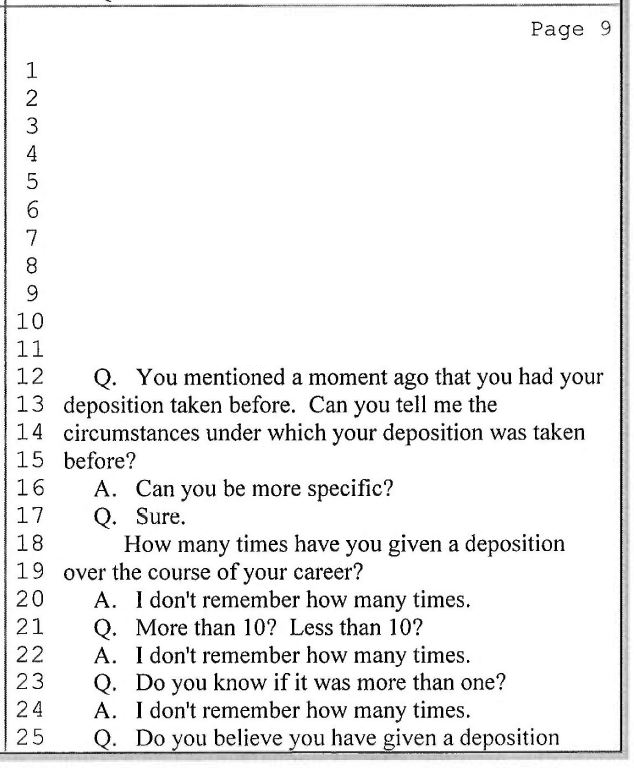
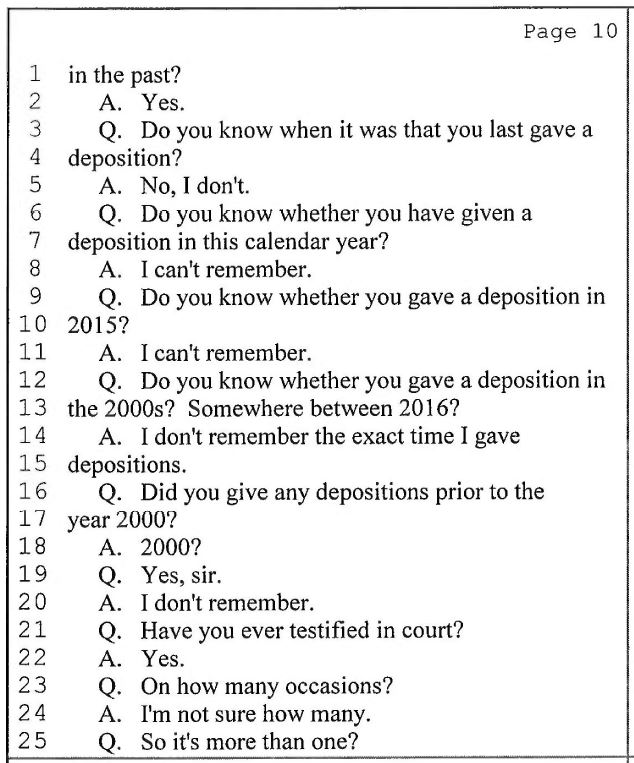

The surgeon is eventually asked about the bylaws of the surgery center where the operation occurred. One of the key tactics of the plaintiff is to demonstrate that the surgeons are responsible for the patient’s outcome because they performed an operation that was not on the authorized list for the facility.
The surgeon also stops partway through this discussion to ask if he should stop talking when one of the attorneys objects to a question, or if he should continue and answer the question.
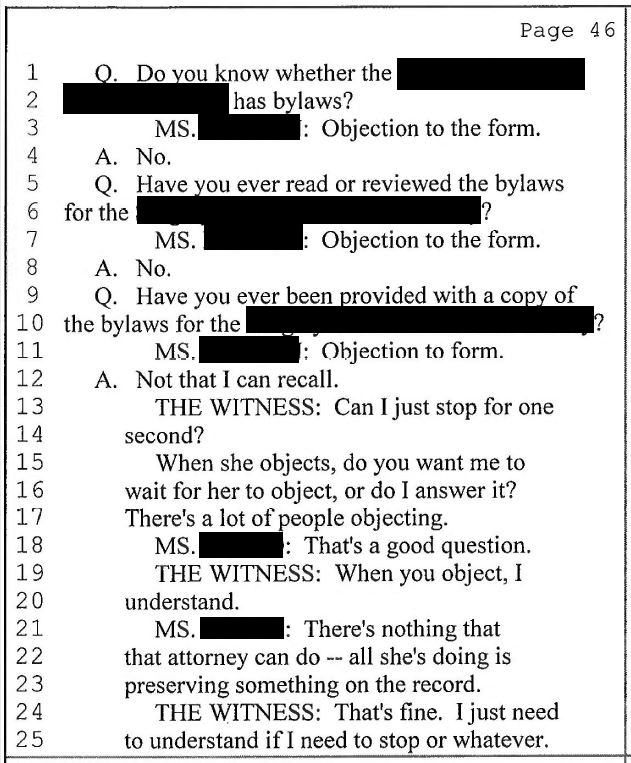
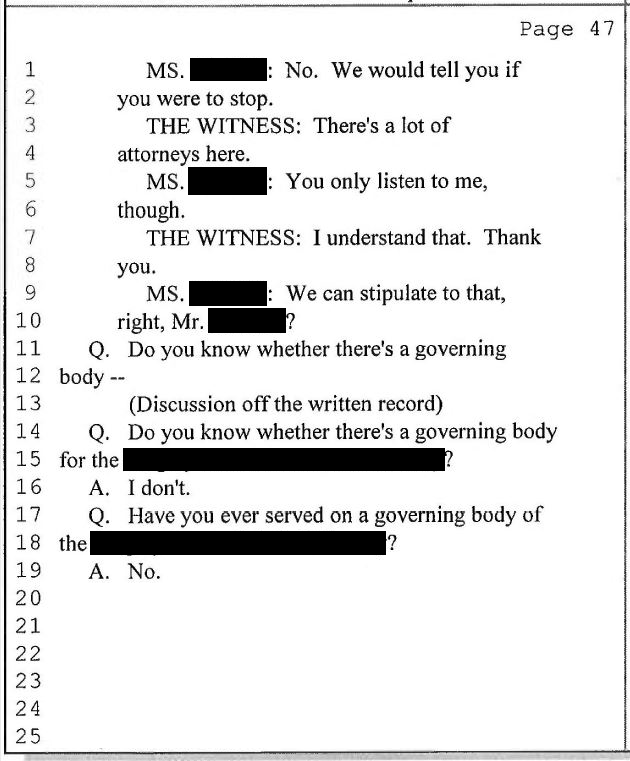
Next, the neurosurgeon was deposed. He was initially asked about the anesthesiologist who made the fatal error. It turns out, they had worked together extensively. In fact, she had been the anesthesiologist for the neurosurgeon himself, as well as his children. He obviously trusted her skills as an anesthesiologist.
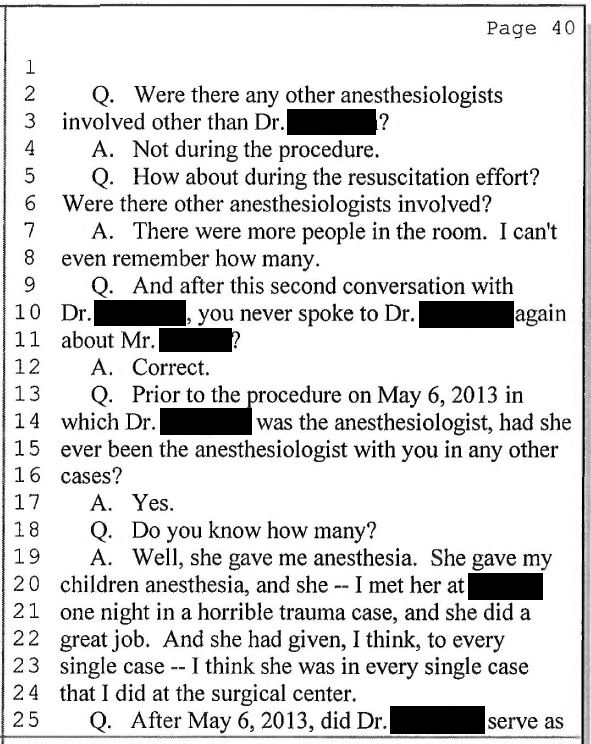
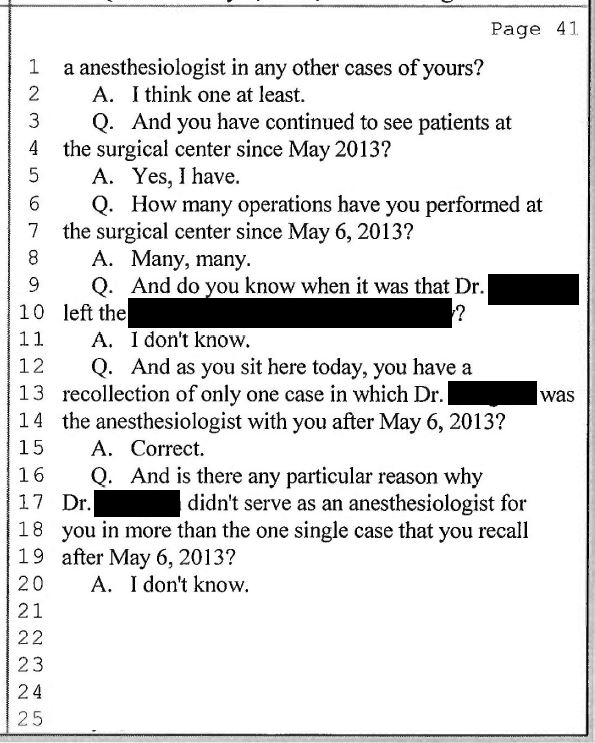
The neurosurgeon had gone to the ED shortly after the ambulance left with the patient. On arrival, he notified that the patient was deceased, and he spoke with the patient’s family. He was then asked about a report that had been done by the Department of Public Health. The report stated that the ACDF had not been authorized at the surgery center, but in his opinion this was an erroneous conclusion based on confusion over a difference in an acronym.
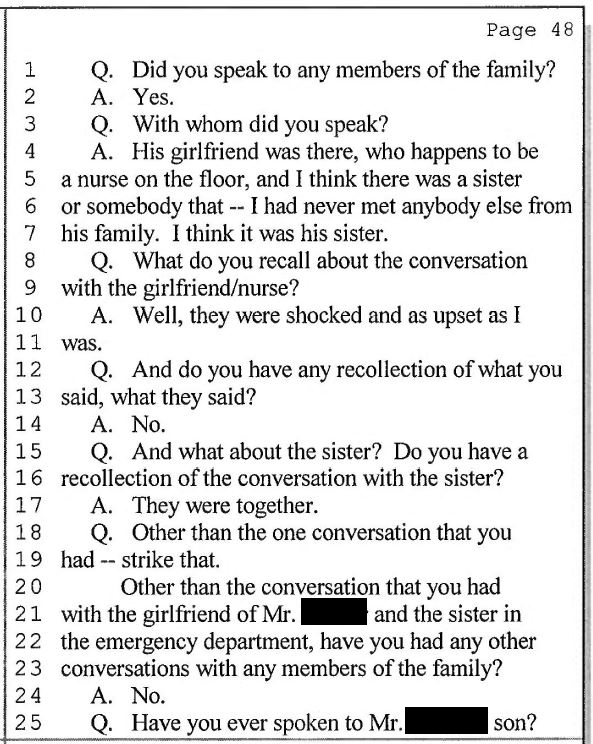
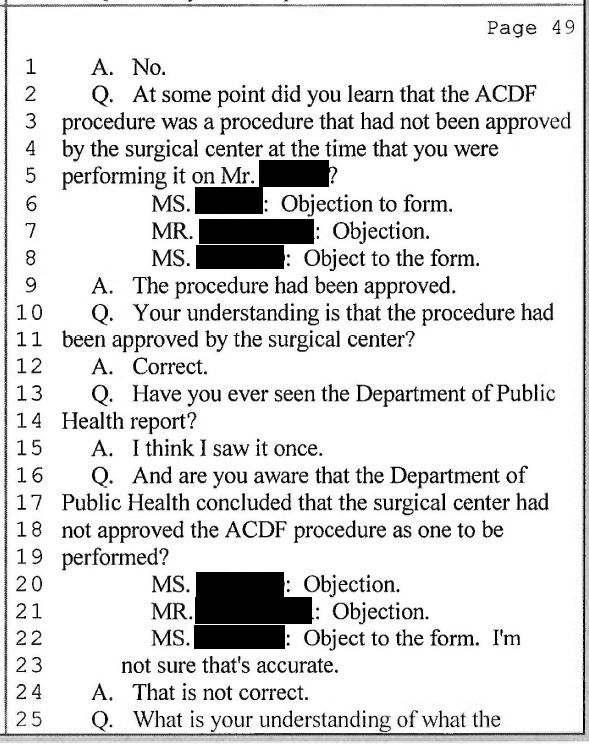
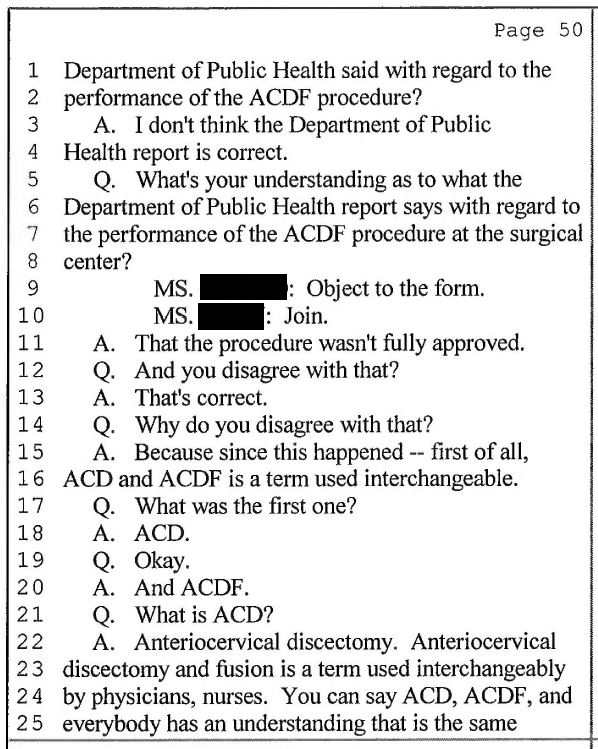
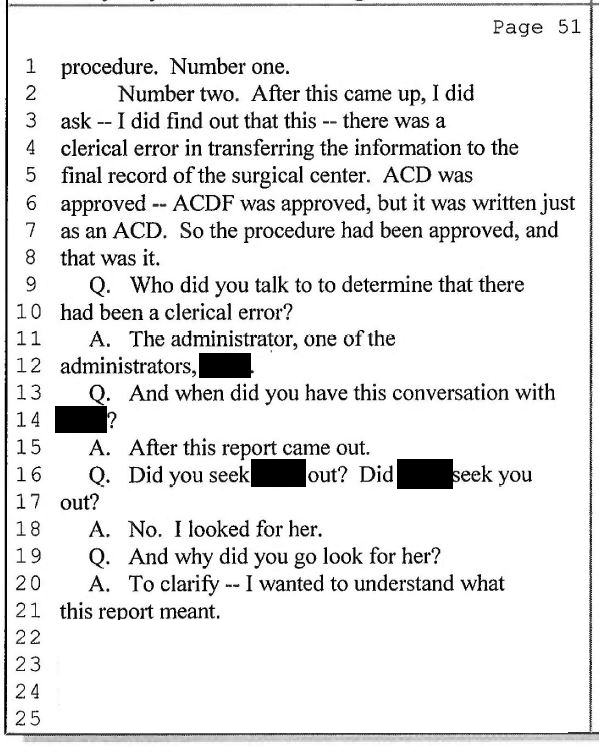
A report from the Department of Public Health noting that the surgeons violated their own protocols is a gift to a plaintiff’s attorney. It gives them a distinct advantage and is an easy way to show a jury that the defendants were negligent. However, the fact that “ACDF” and “ACD” had been confused calls into question one of the plaintiff’s main advantages.
Hospital bylaws and protocols are a frequent target for plaintiff’s attorneys. As many physicians have discovered at trial, they are often written in a confusing manner and are not readily accessible. Indeed, many physicians sign off on these documents (buried in a massive stack of paperwork) when getting their medical privileges, but never see them again. These documents generally provide no benefit to the physician and have little bearing on the safe practice of medicine, but give a massive advantage to a plaintiff.